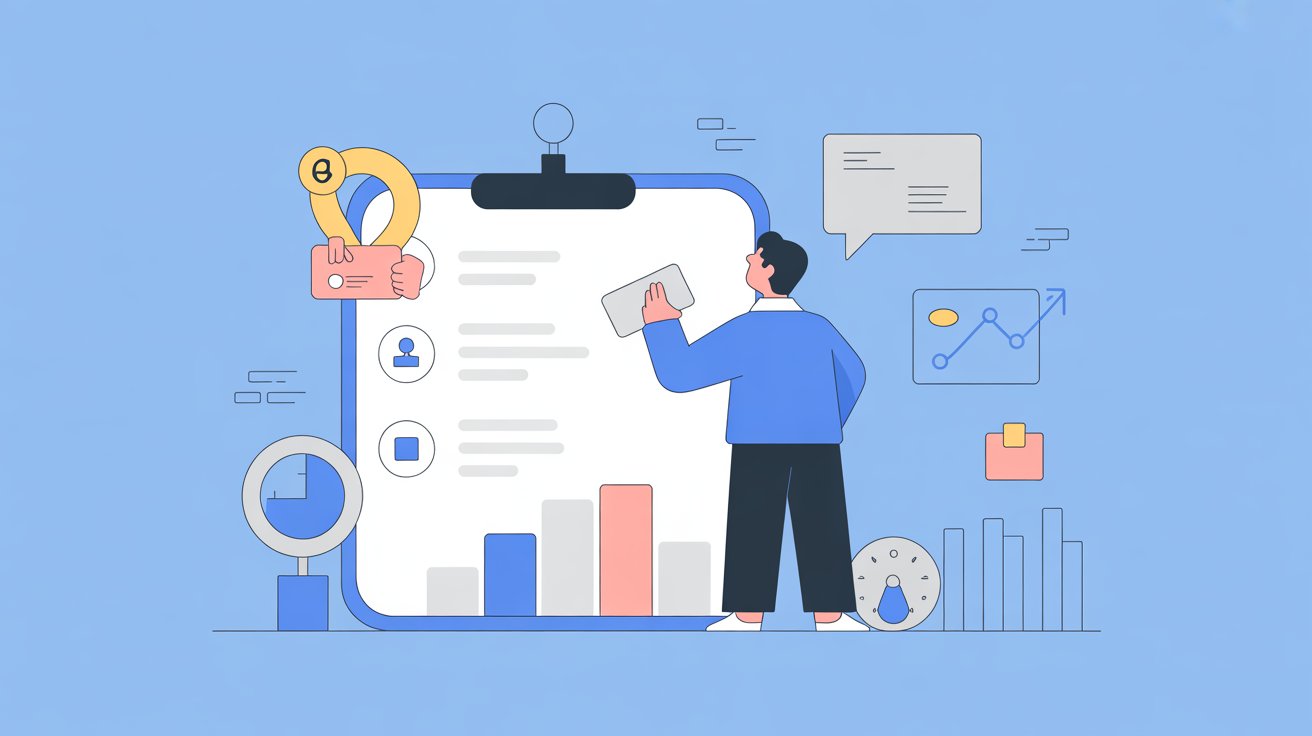Imagine hiring someone to protect your house, but you only check their background once on the day they move in. After that, no follow-ups, no check-ins. Sounds risky, right?
That’s essentially what many businesses do when it comes to vendor due diligence.
Vendors don’t just deliver services; they often handle your customers’ data, access your internal systems, and play a major role in how your brand is perceived. If they mess up, you might be the one paying the price.
That’s why a modern due diligence process should be more than a box-ticking exercise. It needs to be automated, continuous, and smart. Let’s dig into why that matters and how to get there.
What Is Vendor Due Diligence?
Vendor Due Diligence is the process of evaluating a third-party vendor before entering into a business relationship. The goal is simple: to understand whether the vendor is reliable, compliant, financially stable, and aligned with your organization’s standards.
This process typically involves reviewing:
- Financial health – Can the vendor sustain its operations long-term?
- Legal and regulatory compliance – Are there any lawsuits, sanctions, or red flags?
- Security and data practices – Can they protect your sensitive information?
- Operational capabilities – Do they have the systems and resources to deliver?
- Reputation and ethics – Are they known for ethical business practices?
Vendors often have access to your systems, data, and customers due diligence is not just good practice. It’s a necessity.
Done right, vendor due diligence helps you minimize risk, protect your brand, and ensure that every third-party relationship supports—not compromises—your business goals.
Why Traditional Due Diligence Falls Short?
Vendor risks can change overnight, relying solely on traditional due diligence methods is no longer enough.
Here’s why the old ways don’t cut it anymore:
- It’s Time-Consuming and Manual: Traditional due diligence often means chasing documents, manually reviewing spreadsheets, and coordinating via endless email threads. It’s a tedious process that slows down vendor onboarding and ties up valuable team time. For growing businesses, this manual approach becomes increasingly unsustainable.
- It Offers Only a Point-in-Time View: Most legacy systems evaluate vendors only at the start of the relationship. But what happens six months down the line if that vendor gets fined for a compliance breach or suffers a cyberattack? Traditional due diligence doesn’t account for evolving risks, leaving organizations exposed between review cycles.
- It’s Inconsistent and Prone to Human Error: Without standardized processes or automation, teams end up using their own judgment to assess vendors—leading to inconsistent results. Important red flags can be missed, especially when dealing with large volumes of vendor data or complex risk categories like cybersecurity, legal, or financial stability.
In short, traditional due diligence was built for a slower, simpler time. Today’s businesses need smarter, real-time, and automated solutions that evolve with the risk environment.
Automating the Due Diligence Process
Vendor due diligence doesn’t need to be a time sink. With the right tools, you can streamline the entire process using automation eliminating the need for endless spreadsheets, back-and-forth emails, and manual data entry.
Automated due diligence software pulls relevant data from trusted sources, assesses vendor risk based on predefined criteria, and flags potential concerns without your team lifting a finger. It’s a smarter, faster, and more scalable approach to evaluating third-party partners.
Key Benefits of Automation
Time Efficiency
Automated platforms can review hundreds (or even thousands) of vendors simultaneously, cutting down the weeks-long process to just a few hours or even minutes.
Consistency and Accuracy
Objective, rules-based risk scoring eliminates human bias and ensures every vendor is assessed using the same standards.
Scalability
As your business grows, so does your vendor list. Automation allows you to expand without adding extra headcount or compromising on risk oversight.
Real-Time Insights
Unlike static reports, automated systems provide dynamic, always-updated views of vendor risk so you’re never left in the dark.
Automation isn’t just about working faster it’s about working smarter, reducing errors, and making confident, data-driven decisions.
Role of Continuous Monitoring
Vendor due diligence shouldn’t stop after onboarding. A vendor that checks all the boxes today could easily raise red flags tomorrow. That’s where continuous monitoring plays a critical role—it ensures your risk assessments stay current and your organization stays protected.
Unlike static reviews, continuous monitoring keeps a close, ongoing watch on vendors across key risk areas. It helps you spot changes as they happen—so you’re not blindsided by sudden legal issues, reputational fallout, or compliance breaches.
By tracking vendors in real time and surfacing new threats as they emerge, your team can transition from reactive to proactive risk management.
What Should You Monitor Continuously?
Here are the most critical data points to track on an ongoing basis:
- Credit Score Fluctuations
A sudden dip in a vendor’s credit rating can signal financial instability or upcoming business disruption. Monitoring credit changes helps you assess their financial health before it affects your operations. - Legal or Compliance Violations
Vendors may face lawsuits, regulatory actions, or fail to meet compliance standards over time. Continuous monitoring keeps you informed about legal developments that could impact your risk exposure. - Data Breaches or Cybersecurity Incidents
A vendor’s cybersecurity practices directly affect your own. Monitoring breach reports or security lapses helps you take swift action to protect sensitive data. - Regulatory Sanctions or Fines
Vendors flagged by global watchdogs, financial authorities, or industry regulators can put your business at risk of non-compliance. Staying ahead of sanctions ensures you’re never caught off guard. - Media Mentions or Reputational Damage
Negative press, whistleblower stories, or public scandals can be early indicators of deeper issues. Reputational monitoring helps you respond before the damage spreads to your brand.
With the help of real-time alerts and automated dashboards, your compliance and procurement teams gain the visibility they need to act quickly and decisively—before small issues snowball into costly mistakes.
Best Practices to Implement Due Diligence
While automation and continuous monitoring bring powerful benefits, they are most effective when implemented thoughtfully. A well-planned implementation strategy will increase user adoption and make the system more effective over time.
Here are the key steps to ensure a successful rollout of your automated due diligence system:
- Define Your Goals
Before diving into the technology, take the time to define your specific objectives. What are the biggest risks to your business that you want to mitigate? Are you more concerned with financial stability, regulatory compliance, data security, or something else? This step is critical to ensure your due diligence system is aligned with your organization’s needs and risk appetite.
- Map Risk Categories
Once you have your goals, break them down into specific risk categories. These could include financial risks, cybersecurity threats, reputational concerns, compliance issues, and more. Categorizing vendors by their respective risks will make it easier to assess and prioritize vendors, as well as tailor your monitoring efforts to the most critical areas.
- Set Clear Risk Thresholds
Not all risks are created equal. Define what level of risk is acceptable for your organization and when action should be taken. For example, a small fluctuation in a vendor’s credit score may not be cause for concern, but a major breach in data security may require immediate disqualification. Setting clear thresholds ensures that your teams understand when to act and what constitutes a deal-breaker.
- Train Your Teams
Implementing automated due diligence tools won’t work if your team isn’t properly trained. Ensure that key stakeholders—procurement, legal, compliance, and risk teams—are well-versed in the new tools and workflows. Provide them with the context they need to understand the system’s features, functionality, and how it ties into their existing processes.
- Review and Refine Regularly
The risk landscape is constantly evolving, so it’s important to reassess and refine your due diligence processes regularly. Ensure your risk thresholds are still relevant, update your monitoring criteria as new threats emerge, and adjust workflows to accommodate changes in your vendor ecosystem. Periodic reviews will help you keep pace with changing risks and continuously optimize the system for long-term success.
By choosing the right technology and following a thoughtful implementation strategy, you’ll create a more agile, proactive due diligence process that not only protects your business but also supports better vendor relationships and decision-making in the long run.
Conclusion
Automating the due diligence process and incorporating continuous monitoring not only saves time but also helps you stay ahead of potential risks, keeping your vendor relationships secure and reliable. With the right technology and strategy in place, you can proactively identify issues before they become costly problems, enhancing overall business resilience.
If you’re ready to elevate your vendor risk management strategy, schedule a demo today.




























